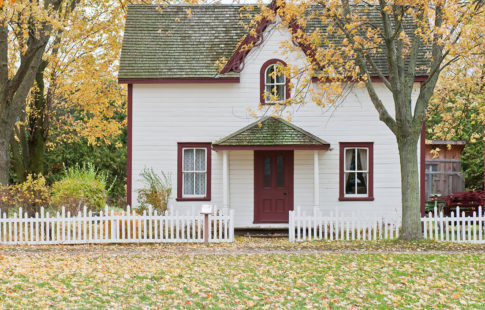Are you thinking about buying your first home? Don’t start shopping around for a mortgage without understanding the basics of a mortgage. You might have encountered confusing jargon such as annual percentage rate (APR), discount points, loan origination and application fees.
Making sense of what makes up your mortgage is a great way to reduce stress during your home buying journey.
The most important part of a mortgage is the interest rate, which is the price you pay for using the lender’s money. Getting a lower interest rate can save you money during the life of your mortgage. You might ask yourself, “As a first-time home buyer, how can I reduce my interest rate?”
- Improve your credit score. Lenders look at your credit score to determine your creditworthiness. Before you start mortgage shopping, your first step should be to check your credit.
- Try to make a down payment of 20 percent or greater. There are many benefits to making a large down payment, one of them is potentially receiving a lower interest rate.
- Pay for discount points. If you have some extra cash, you can consider “buying down the rate” by paying a point. One point costs 1 percent of your mortgage amount (or $1,000 for every $100,000).
- Consider a 10-year or 15-year mortgage instead of a 30-year mortgage.
- Maintain a steady work history. To improve your chances of qualifying for a lower interest rate mortgage, try not to change jobs before or during the loan process.
- Shop around for the best rate.
- Consider an adjustable-rate vs. a fixed-rate loan. If you can pay off your mortgage very quickly, an adjustable loan might be a good option for you.
As a first-time home buyer, you should know the difference between interest rate and APR. While the interest rate is important, the APR gives home buyers a more accurate measure of the cost of a mortgage because it includes the interest rate plus other costs such as discount points, lender fees and some closing costs.
The best way to consider the total cost of your mortgage is to look at APR. The following chart compares the interest rate, APR and monthly payment for a hypothetical $250,000 mortgage. (Please keep in mind that the following sample numbers are for illustrative purposes only — actual available rates, costs, and other terms will vary.)
| Total loan amount | $250,000 | $250,000 | $250,000 |
| Term in years | 30 | 30 | 30 |
| Interest rate (%) | 4.5 | 4.25 | 4 |
| Discount points paid (%) | 0 | 1 | 2 |
| Closing costs* | $4,900 | $4,900 | $4,900 |
| APR | 4.666% | 4.497% | 4.325% |
| Monthly payment** | $1,266.71 | $1,229.85 | $1,193.54 |
Note that the APR is higher than the interest rate because it includes loan origination and application fees.
When you shop around for a mortgage, it is important to consider the APR and not just the interest rate. APR reveals the total cost of your mortgage. As you see in the above chart, the APR takes into consideration additional costs and fees associated with your mortgage. By considering the APR, you can more accurately compare the total costs of each loan offer and select the best option for you. As you talk to a lender, don’t just ask for the interest rate. Ask your lender for the interest rate, loan origination fees, application fees and APR as you are shopping for a home loan.
Each mortgage is different. Costs paid to your lender and to third parties may vary. In addition to principal and interest, you might need to make additional payments into an escrow account in order to cover homeowner association (HOA) dues, property taxes and homeowner’s insurance. If you have made a smaller than 20 percent down payment, it is generally required that you pay for private mortgage insurance (PMI).
As a first-time home buyer, it is important to understand the basics of a mortgage. When you know the difference between interest rate and APR, you can make more informed decisions about your mortgage. Before you commit to a home loan, understand all fees, costs and expenses. Make sure you are factoring in all of the costs of your mortgage when you are shopping around to avoid any surprises.
*Closing costs vary and exclude discount points.
**Monthly payment excludes, PMI, taxes, insurance and HOA fees.







